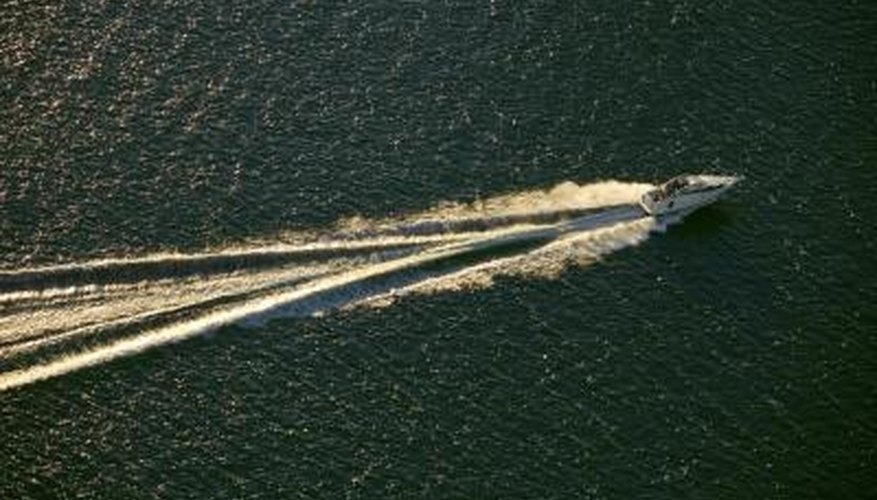
The design of a propeller can dramatically impact the performance of your boat and the longevity of your engine. Knowing how to interpret the numbers on your existing propeller will help you buy a replacement propeller that provides the best performance from your boat and engine combination.
Numbers Stamped on the Propeller.

Hemera Technologies/AbleStock.com/Getty Images
There are two sets of numbers stamped on every propeller. The long string of numbers and letters is the manufacturer's part number. There are no industrywide rules to interpret this number. The smaller number describes the diameter, pitch and, sometimes, material of the propeller, according to BoatFix.com. The diameter and pitch can be separated by the letter "X," CompProp states. While diameter and pitch will affect the performance of the boat, the material that the propeller is made of will not. Aluminum is the most common material used to make propellers.
Diameter
The diameter is the size of the circle that the propeller occupies in the water. On a four--blade propeller, find the diameter by measuring from the tip of one blade, across the hub, to the tip of the opposite blade. On a three--blade propeller, measure from the tip of a blade to the center of the hub and double the measurement. A propeller diameter that's too large will hit other parts of the boat. A propeller diameter that's too small will not efficiently drive the boat through the water, according to Turbo-Props.com
Pitch
The pitch of a propeller is how far the blade would move forward in the water during one complete rotation, BoatFix.com explains. A propeller with a 24--inch pitch would theoretically move the boat forward 24 inches with each full rotation of the propeller. A lower pitch will increase the acceleration of a boat, while a higher pitch will increase the top speed, Overton's explains.
Correct Sizing of the Prop
The propeller acts as a one--speed transmission for your boat, so it is important to match it to the engine, CompProp states. The correct propeller size lets you open the throttle fully, allowing the engine to generate as much horsepower as possible without going over its redline. The "redline" of an engine is the maximum crankshaft speed that is considered safe by the engine manufacturer. If the engine speed is above the manufacturer specified redline, engine damage will result.
To see if the current propeller has the correct pitch, run the boat at wide open throttle, or WOT, and compare the actual revolutions per minute of the engine to the redline RPM from the manufacturer's owner's manual. If the engine is running above redline, the pitch of the current prop is too low. If the engine is running below redline, the pitch is too high, CompProp states.
References
Writer Bio
Peter Hall graduated from the University of Delaware with a Bachelor of Arts in history and journalism in 2005. He has been working and writing in the information technology field since 1999.



